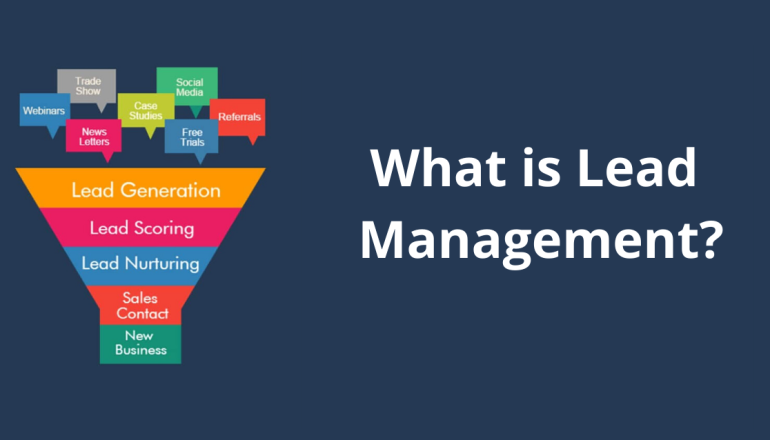
%13 %b
How to increase your qualified customers with lead management
Lead management is a process of attracting, identifying and converting potential customers into qualified leads.
Lead management is an essential part of digital marketing, as it helps to achieve business goals. With the help of modern CRM technologies, but especially with our Cuborio CMS, anyone can manage leads efficiently and increase sales opportunities.
CRM technologies automate many manual procedures that allow companies to easily monitor and manage the leads generated. In addition, customer and lead information can be analysed in depth to improve marketing strategy. Using this tool, companies can generate more qualified leads and optimise conversions, thus increasing the return on investment.
What is the difference between a customer and a lead?
The main difference between a customer and a lead is that a customer is someone who has already made a purchase, whereas a lead is a potential customer. A customer has already invested in the company, whereas a lead is only at the beginning of its relationship with the company. A customer has already shown an interest in the company's products or services, whereas a lead may also be uninterested.
A lead can become a customer if it is reached by suitable offers and promotions, which is why the sales management process aims to convert leads into customers through targeted actions.
What is lead generation?
Lead generation is a marketing process aimed at generating interest in a product or service in order to convert potential customers into leads, i.e. qualified contacts.
It consists of using targeted technologies, strategies and content to attract the attention of potential customers with the aim of creating a qualified and well-segmented data base from which to derive valuable information about the audience and how to interact with it.
Lead generation can be realised through different platforms, such as websites, blogs, email marketing, online advertising campaigns and social media.
The different phases of lead management
Lead management is a process involving all steps necessary to turn a potential customer into an active customer and includes activities such as:
- lead generation
- identification of customers;
- market segmentation;
- customer engagement;
- the tracking of results.
it is a complex process that requires time and effort to be executed correctly and provide valuable information to increase sales.
The different stages involved are:
- lead generation;
- lead qualification;
- lead management;
- measurement of results and data analysis.
Each of these phases requires specific skills, and correct completion can contribute significantly to business success.
Thanks to Cuborio you can set realistic goals, define successful strategies to achieve them, and create targeted campaigns to reach interested potential customers, but above all you can achieve perfect contact and lead management in your ecommerce.
Do you want to understand how best to manage your contacts and push your sales to the maximum?
Managing contacts and getting the most out of your sales may seem complicated, but don't worry!
With the help of good lead management with Cuborio, you can efficiently organise your contacts and benefit from them within your ecommerce.
Use the tools within our backend to monitor performance, run detailed reports and identify opportunities for growth.
Investing in your lead management system is the key to increasing your online sales and turnover, which is why we recommend that you constantly follow up with your leads to offer them excellent service and better understand their needs, starting with:
1. Identifying and listening to your leads
Identifying and listening to your leads is an important part of the sales management process. Make sure you know their desires, goals, and needs. Use tools such as surveys, questionnaires or interviews to gather valuable information. Really listen to what they have to say: your lead knowledge will increase as well as your ability to achieve your business goals.
2. Create your conversion path
Create a conversion path to maximise your lead opportunities. A conversion path is a strategy that helps increase conversions from leads generated on your online and offline marketing channels. Use tools such as Call-to-Action, contact forms, landing pages, customised content and more to guide potential customers towards buying or joining your service. Create a flow that is logical and consistent to increase your chances of turning leads into satisfied customers.
3. Track lead behaviour
Tracking lead behaviour is an important activity to better manage your marketing strategies. You can monitor your prospects' interests and understand how they move around on your platform, offering them customised content based on their preferences. This can greatly increase your chances of converting leads into actual customers.
4. Qualify leads
Qualifying leads is an important part of the lead generation management process. It involves defining the quality of the contacts in an ecommerce store, classifying them according to criteria such as interest, potential, and willingness to buy. Qualifying leads allows companies to choose precisely which path to take to achieve their marketing goals. To do this, companies need to collect data on each individual lead and then evaluate these elements in order to understand whether it is worth investing time and effort in the contact.
5. Nurturing leads
Managing leads is one of the main challenges for companies. Nurturing leads is an important step and should not be neglected. You can start by identifying potential buyers, monitoring how they interact with your website, content or marketing campaigns. Once leads have been identified, it is important to establish regular and effective communication, providing quality content and useful information. In addition, it is necessary to constantly measure results and update lead data so that you always know who you are contacting. By following these practices, companies can get the most out of lead nurturing.





